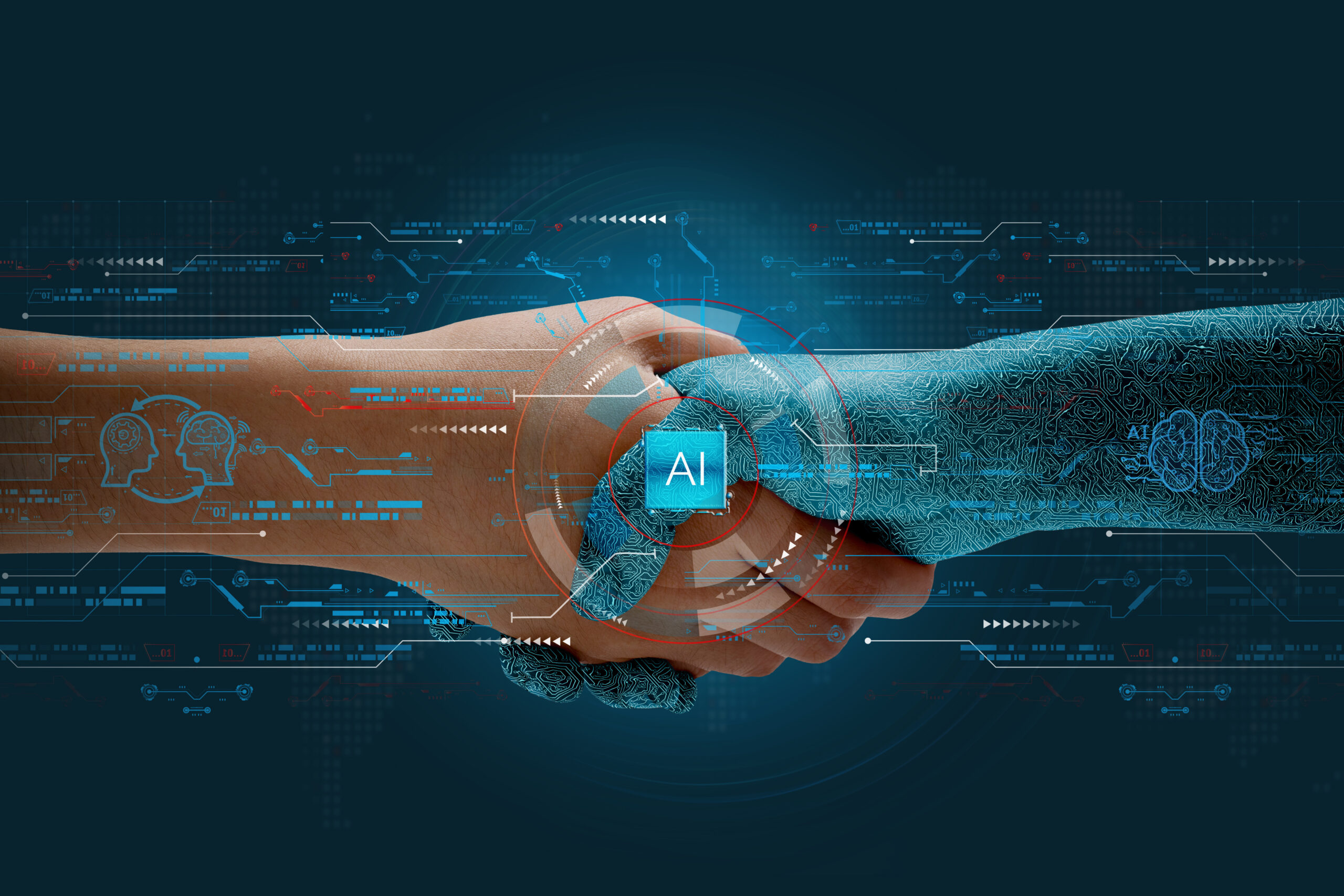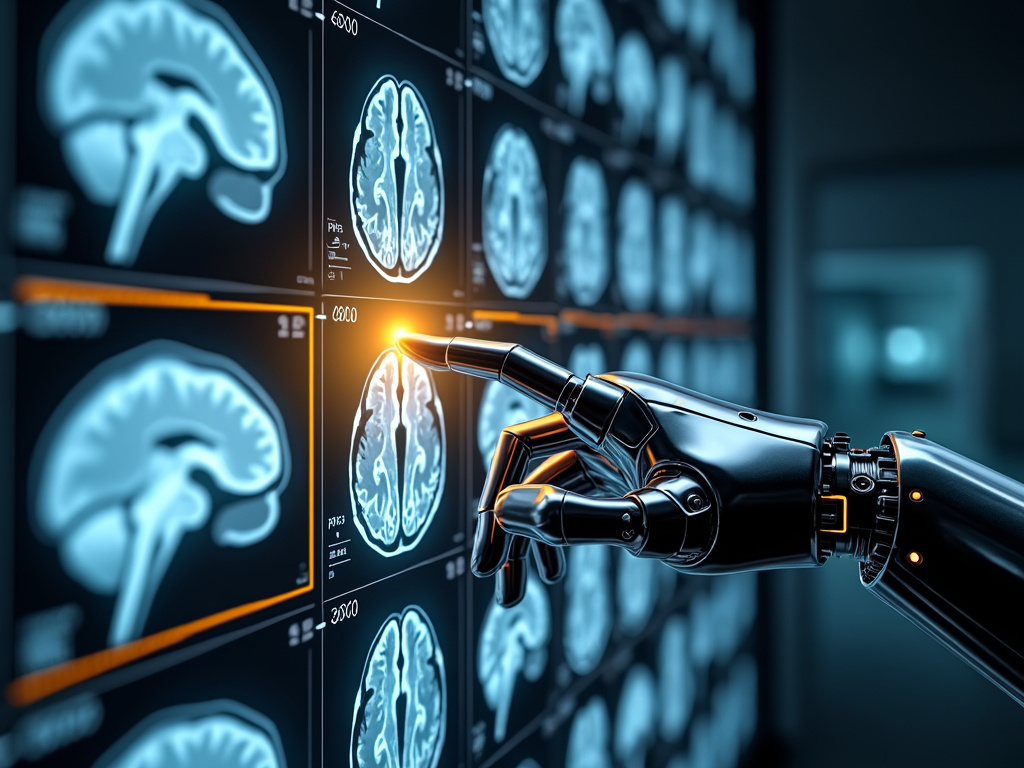Enhancing Communication Through Human-AI Collaboration: Bridging Gaps and Building Connections
Imagine a future where artificial intelligence collaborates with humans to achieve remarkable outcomes. That future is already here, as organizations worldwide are discovering the transformative power of human-AI collaboration in reshaping how we work, create, and solve complex challenges.
The partnership between humans and AI goes beyond simple automation or task delegation. It’s an intricate dance where human creativity and intuition merge with AI’s analytical prowess and data processing capabilities. Leading companies are finding that the most significant performance improvements come when humans and smart machines work together, enhancing each other’s inherent strengths rather than competing.
Yet this collaboration isn’t without its complexities. As we venture deeper into this new frontier, organizations face crucial challenges in fostering effective communication between human and artificial intelligence systems. Success requires carefully considered design principles, clear protocols for interaction, and a deep understanding of how to balance AI capabilities with human expertise.
The evolution of human-AI collaboration has brought us to a pivotal moment where we must rethink traditional approaches to workplace communication and team dynamics. Through platforms like SmythOS, organizations are discovering how to create seamless interactions between human operators and AI systems, establishing frameworks that maximize the potential of both.
This exploration of human-AI collaboration and communication will uncover the essential elements that make these partnerships work, examine the challenges that need to be overcome, and reveal how forward-thinking organizations are building the foundation for a future where humans and AI achieve remarkable results together.
Challenges in Human-AI Collaboration
The integration of artificial intelligence into human workflows brings complex challenges. While AI systems excel in data processing and pattern recognition, human-AI collaboration faces significant hurdles that require thoughtful solutions.
Cognitive biases are a major challenge in human-AI collaboration. As highlighted in recent research, human decision-makers often struggle with biases such as anchoring bias, where initial information disproportionately influences judgments, and confirmation bias, which leads people to favor information that confirms their existing beliefs. These cognitive limitations can impact the quality of human-AI collaborative decisions.
Integration issues also pose substantial challenges, especially in professional environments where AI systems must seamlessly integrate with established workflows. Organizations often struggle with maintaining efficiency while ensuring humans retain meaningful control over decision-making processes. This complexity increases when dealing with mission-critical tasks where errors could have serious consequences.
Differences in communication modalities between humans and AI systems create additional friction points. Humans excel at contextual understanding and nuanced communication, while AI systems operate through strict logical frameworks and data-driven responses. This difference in processing and expressing information can lead to misunderstandings and reduced collaboration effectiveness.
Beyond technical integration, appropriate reliance on AI is challenging. Some users may place excessive trust in AI systems, while others might be overly skeptical. Finding the right balance requires careful consideration of both human and AI capabilities, along with clear frameworks for when to defer to machine judgment versus human intuition.
Several strands of research aim to bridge the gap between artificial intelligence and human decision-makers in AI-assisted decision-making, where humans are the consumers of AI model predictions and the ultimate decision-makers in high-stakes applications.
ACM Proceedings on Human-Computer Interaction
To address these challenges effectively, organizations must invest in comprehensive training programs that help users understand the capabilities and limitations of AI systems. Additionally, attention must be paid to interface design and system architecture to ensure that human-AI collaboration enhances rather than hinders professional workflows.
Design Considerations for Effective Collaboration


Creating successful partnerships between humans and artificial intelligence requires careful attention to foundational design principles. Effective human-AI collaboration depends on thoughtfully balancing the unique capabilities that both humans and machines bring to the table.
Humans excel at emotional intelligence, creativity, and nuanced decision-making in complex situations. As noted in recent collaborative intelligence research, AI systems complement these abilities with their capacity for rapid data processing, pattern recognition, and consistent performance on repetitive tasks. The key is designing interfaces and workflows that leverage these complementary strengths.
Agency plays a crucial role in this dynamic. Both human and AI agents need clearly defined roles and responsibilities that align with their capabilities. For humans, this means maintaining meaningful control and decision-making power, particularly in high-stakes situations. The AI system should augment human judgment rather than attempting to replace it entirely.
Interaction design is another critical consideration. The interface between human and AI collaborators must be intuitive and transparent. Users need to understand how the AI system arrives at its recommendations and feel empowered to accept, modify, or override them as appropriate. This builds trust and encourages productive collaboration rather than blind reliance on automated suggestions.
Adaptation capabilities round out the essential design elements. The most effective collaborative systems can learn and adjust based on ongoing interactions. This includes both the AI’s ability to refine its responses based on user feedback and the human’s growing facility with the system through experience.
Recent implementations demonstrate these principles in action. For example, in medical diagnosis scenarios, AI assists doctors by analyzing patient data and suggesting possible conditions, while physicians apply their clinical expertise and judgment to make final decisions. This partnership leverages the speed and pattern recognition capabilities of AI while preserving the critical role of human insight and expertise.
Security and ethical considerations must also factor into the design process. As collaborative AI systems handle increasingly sensitive tasks, protecting data privacy and ensuring responsible use become paramount. Organizations need clear protocols for maintaining oversight and accountability in human-AI interactions.
The future of work is not about humans versus AI, but rather humans and AI working together. The key is thoughtful design that amplifies the strengths of both.
Ben Shneiderman, Professor of Computer Science
Success ultimately depends on striking the right balance – creating systems that empower human users while leveraging AI capabilities in ways that meaningfully enhance outcomes. With careful attention to agency, interaction, and adaptation, we can design collaborative environments that bring out the best in both human and artificial intelligence.
Role of Natural Language Interfaces


Natural language interfaces are transforming how humans and AI systems collaborate by enabling more intuitive interactions. Instead of requiring users to learn complex commands, these interfaces allow communication with AI using everyday language.
One of the most significant benefits of natural language interfaces is how they streamline collaboration between humans and AI. For example, when working with automation tools, users can describe their goals in plain English rather than specifying exact parameters. Research has demonstrated that this interaction style reduces cognitive load and improves task performance compared to traditional interfaces.
Accessibility is another crucial benefit – natural language interfaces lower technical barriers, allowing more people to engage with AI systems. Whether you’re a seasoned developer or someone with no programming background, expressing your needs conversationally brings powerful AI capabilities within reach. This democratization of access is crucial for widespread AI adoption across different industries.
Modern natural language interfaces are becoming increasingly sophisticated at maintaining context and engaging in multi-turn interactions. They can ask clarifying questions, remember previous exchanges, and build upon earlier conversations, similar to human dialogue. This enables more natural collaboration where both the human and AI contribute their strengths to solve problems together.
It takes more effort to design a proper utterance than to design an improper utterance and invite a partner’s help.
Clark & Brennan on Grounding in Communication
| Aspect | Traditional Interfaces | Natural Language Interfaces |
|---|---|---|
| Technical Proficiency | Requires learning specific commands and navigation | Users can interact using everyday language |
| Efficiency | Often requires multiple steps to accomplish tasks | Tasks can be simplified to a single sentence or phrase |
| Speed | Slower due to complex navigation | Faster as it eliminates the need for menus and specific commands |
| Accessibility | Limited to users with technical knowledge | Accessible to a broader audience, including non-technical users |
| Dynamic Capabilities | Static and rigid | Adapts and learns over time, handling context and ambiguity |
| Interaction Style | Menu-driven and command-based | Conversational and intuitive |
| Integration | Requires specific commands and structured inputs | Can handle multi-turn interactions and maintain context |
However, designing effective natural language interfaces isn’t without challenges. Balancing flexibility and precision requires careful consideration of how people naturally express themselves while ensuring the AI can reliably interpret and act on those expressions. When implemented thoughtfully, these interfaces can dramatically enhance collaboration between humans and AI systems.
Human-Centered Design in AI Systems
AI systems should enhance human capabilities rather than replace them. This core principle drives human-centered design in artificial intelligence. The focus must shift from pure technological advancement to understanding and addressing real human needs, challenges, and contexts.
AI assistants like chatbots often frustrate users with rigid, impersonal responses. Human-centered AI approaches emphasize customizing interactions based on individual user behaviors and preferences, creating more natural and helpful exchanges. This personalization stems from studying how people communicate and what they need from these tools.
Effective human-centered design in AI requires deep user research and continuous feedback. Rather than making assumptions about user needs, designers must actively involve diverse groups of people throughout development. When creating AI-powered healthcare tools, developers need to understand not just the technical requirements but also how different patients and healthcare providers will interact with the system in real-world settings.
We need to think about how people are productive, not just how machines are productive.
Elizabeth Gerber, Professor at Northwestern University
Transparency and user control represent another crucial aspect of human-centered AI design. Users should understand how AI systems make decisions and maintain meaningful control over important choices. This builds trust and ensures AI truly serves human needs rather than forcing people to adapt to rigid technological constraints.
The ethical implications of AI systems demand careful consideration through a human-centered lens. This includes addressing potential biases, ensuring accessibility for diverse user groups, and protecting user privacy. When developing facial recognition systems, for example, teams must proactively work to prevent discrimination and protect individual rights.
Successful implementation of human-centered AI design requires cross-disciplinary collaboration. Technical experts must work alongside designers, ethicists, domain specialists, and end users to create solutions that are both technically sound and genuinely beneficial to humans. This collaborative approach helps identify potential issues early and ensures AI systems integrate smoothly into existing workflows and social contexts.
Leveraging SmythOS for Enhanced Collaboration


SmythOS leads the way in human-AI collaboration, transforming team interactions with artificial intelligence. Its visual builder interface allows both technical experts and domain specialists to develop advanced collaborative systems without extensive coding.
The platform’s real-time monitoring capabilities are crucial for effective human-AI partnerships. A centralized dashboard lets teams monitor agent performance, resource utilization, and system health, ensuring quick identification of potential issues and optimization of workflows.
SmythOS’s powerful integration framework connects to over 300,000 apps, APIs, and data sources, creating seamless environments where AI agents access and process information from multiple sources alongside human team members.
The platform creates intelligent systems that learn, grow, and collaborate with humans to achieve far more than either could alone
Alexander De Ridder, SmythOS Co-Founder and CTO
Security is paramount in collaborative AI systems, and SmythOS ensures this with enterprise-grade controls for secure AI agent operations. This security framework is especially valuable for organizations handling sensitive data or operating in regulated industries, maintaining compliance while enabling innovative partnerships.
Remarkably, SmythOS offers a free runtime environment for deploying collaborative AI systems, removing traditional cost barriers. This democratization allows organizations of any size to experiment with and implement sophisticated human-AI solutions without excessive operational costs.
Conclusion and Future Directions
The landscape of human-AI collaboration is at a pivotal crossroads, promising transformative potential across healthcare, finance, and other sectors. As organizations face implementation challenges, sophisticated platforms showcase the possibilities when human expertise meets artificial intelligence.
Current obstacles, from technical integration hurdles to questions of trust and transparency, are being overcome through innovations in natural language processing and advanced communication paradigms. Research indicates that by 2030, almost all humans and machines will work in teams, fundamentally reshaping complex problem-solving approaches.
The path forward requires a balance between automation and human oversight. As collaborative systems become more sophisticated, the focus shifts to enhancing the synergy between human intuition and machine capability. Platforms that prioritize visual debugging, seamless API integration, and enterprise-grade security are paving the way for this new era of cooperation.
We can expect significant advancements in how AI understands and responds to human needs. Improved interaction paradigms will lead to more intuitive interfaces, reduced friction in daily operations, and unprecedented productivity, especially in real-time decision-making and complex data analysis scenarios.
The journey toward effective human-AI collaboration is ongoing, but the trajectory is clear. Success will depend on creating systems that enhance rather than replace human capabilities, fostering a partnership that leverages both strengths while compensating for their limitations. As we refine these technologies, the focus must remain on building tools that are powerful, accessible, transparent, and aligned with human values.
Last updated:
Disclaimer: The information presented in this article is for general informational purposes only and is provided as is. While we strive to keep the content up-to-date and accurate, we make no representations or warranties of any kind, express or implied, about the completeness, accuracy, reliability, suitability, or availability of the information contained in this article.
Any reliance you place on such information is strictly at your own risk. We reserve the right to make additions, deletions, or modifications to the contents of this article at any time without prior notice.
In no event will we be liable for any loss or damage including without limitation, indirect or consequential loss or damage, or any loss or damage whatsoever arising from loss of data, profits, or any other loss not specified herein arising out of, or in connection with, the use of this article.
Despite our best efforts, this article may contain oversights, errors, or omissions. If you notice any inaccuracies or have concerns about the content, please report them through our content feedback form. Your input helps us maintain the quality and reliability of our information.
